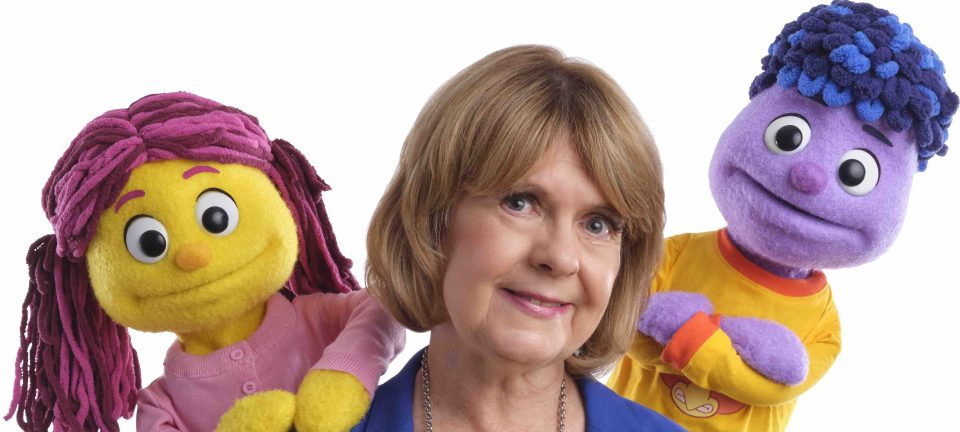Sandee McClowry, PhD, RN, FAAN is the developer of NEW INSIGHTS into Children’s Temperament (INSIGHTS). While a faculty member at New York University, Dr. McClowry developed INSIGHTS in partnership with stakeholders in low income urban neighborhoods. INSIGHTS is a social and emotional learning intervention with three programs: a curriculum for children in the primary grades, a program for parents, and another for elementary school educators.
Dr. McClowry was the principal investigator of multiple randomized clinical trials that tested the effectiveness of INSIGHTS. The studies showed that INSIGHTS improves children’s academic skills and behavior and enhances parenting skills. INSIGHTS also improves the relationships that teachers and parents have with challenging children.
Dr. McClowry is currently the president of INSIGHTS Intervention, LLC and devotes her time conducting INSIGHTS in the United States and in other countries. She and her team are culturally adapting the parenting program for parents who predominantly speak Spanish.
What inspired you to create INSIGHTS, and what gap does it fill in child development and education?
Well, a lot of observation that if we go all the way back to when I was a pediatric nurse in the hospital, kids reacted to the experiences differently. And then I had my own two children, and they reacted to the same experiences differently. And I thought there really has to be something that describes this more than the environment. And that’s when I ran across the construct of temperament, and it has fascinated me ever since. Children are born with a particular temperament, and the environment can either support them or really make it difficult for them.
How does INSIGHTS help children develop both socially and academically?
We have a lot of research to prove that we’ve done multiple randomized clinical trials, and it not only reduces their behavior problems, but as importantly improves their academic skills and reading and math, and even in logical thinking and attention.
What are some of the common misconceptions about temperament, and how it influences behavior?
That’s great question. Because people associate temperament with temper tantrums. And that’s not what it is. Temperament is the child version of personality. Personality’s broader than temperament. You can have two kids in the very same room. One is running around enjoying, exploring everything, and the other one sitting very quietly observing what’s going on.
How does INSIGHTS equip parents and teachers to better recognize and support children’s unique behavioral traits?
I’ve received questionnaires from thousands of parents in terms of describing children’s temperaments. There’s such a variety of behavior. And we all tend to think that kids, or with most of us, tend to think that kids can do it if they just really try, or it’s their parents’ fault on some behaviors. And temperament causes us to look back a little bit and see what else is going on. For example, there’s one of the temperament profiles that we discuss is the industrious temperament. This is a hard worker goes to school, loves school, does the homework no reminders needed pleasant most of the time.
That’s the temperament that teachers tend to go into teaching looking for. They think they’re going to have a classroom full of children who are eager to learn. But in my research, that’s only been about 10% of kids. So there’s a lot of kids who are temperamentally disadvantaged unless their teachers and parents understand them, appreciate them, and then use strategies that work with their particular temperament.
How can this change education?
I think helping teachers understand what they need to do to set up their environment. One of the studies we did showed that in the first two weeks the kids’ behavior problems in the classroom and these were all children at risk for behavior problems, their behavior plummeted. And we had not even started teaching strategies yet. It was just a matter of understanding the different temperaments and appreciating them.
How does this program help children understand their own temperament and that of others?
We have four typical temperament profiles. The adults learn them through videos with professional actors. The children learn them with puppets, and each of the puppets has a different personality. So the children learn that what’s easy for one puppet may be difficult for another puppet, and how they, as a friend can help support them. That’s really important empathy skills to have. And the other thing that it does is because the children are engaged with the puppets and get to play different puppets.
They get to try on different behaviors without any admonishment that their behavior is not being good, because the puppet did so. They can test out. A very shy child can test out some behaviors to see. Well, what happens when I do this, plus, of course, understanding again how the different puppets are going to react. And then we go into resolving dilemmas. So the videos show different dilemmas, and the kids use an app to help them solve their dilemmas, and they also use dilemmas that occur in life, because life is full of dilemmas, as we all know, and the fun thing about that is, they get to throw out.
We encourage them to throw out any kind of solution they have, and then to go and evaluate them. And they quickly learn, as we tell them, that their first response may not be their best response. So that’s why we go through the whole process before we decide on how we’re going to attempt to resolve a dilemma.
Can you point out your “Aha moment” when you knew INSIGHTS was going to work?
There is a temperament profile that we call high maintenance. It’s a child who’s high in activity, low in attention, and they tend to be rather honest in terms of their responses to things which are typically grumpy. And so one of the kids was talking to the high maintenance puppet, and he asked, the facilitator, “Does Gregory have a hard time following directions?” And she said, “Yes, but he’s trying really hard.” And he said, “And I’m trying really hard, too.”
And those are the kids who really challenge teachers and parents, and for them to be, you know, the world’s not easy for them and for them to understand that they have difficulties. And that’s okay. And we’re working with them. And they’re lovable. And we appreciate how honest they are, although there we do expect them to be respectful in their grumpiness. Those are the same kids that in other programs would be diagnosed as ADHD. But we got their behavior down to normal levels without the use of any medication at all.
What strategies does INSIGHTS provide for educators to adapt teaching methods based on different temperaments?
One of the ones that we use, which is so simple, cost free, but is very effective is the secret signal. So rather than nagging a child, the teacher and the child, and this works at home too, negotiate with the child a certain signal. And that signal’s used. And then there’s no shame attached. So the child has an opportunity to correct his behavior or her behavior without anybody else knowing what’s going on, and they really appreciate that. And if that doesn’t work, there are minor consequences that happen, but it often work it most times works very well with the kids because they appreciate that.
What resources are available for parents and educators who want to implement INSIGHTS?
Well, we’ve had a lot of Federal funding to develop it and test it. And recently we were just finishing a grant that has made it more technically up to date and program’s ready for schools and for parents. They just need to contact us and we’ll work something out with them. We’re eager to get it out where it belongs. In the schools, in the communities, after school programs.
To learn more visit insightsintervention.com, stay focused positive and productive.
















